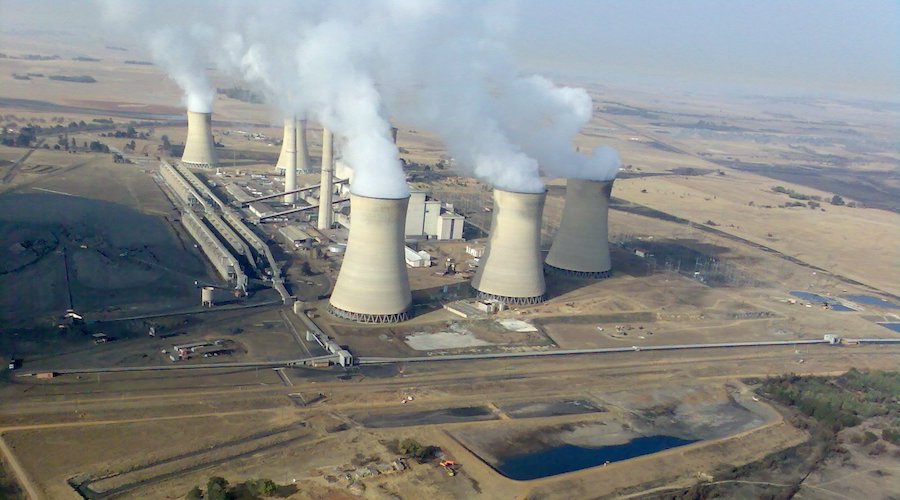Reuters | September 26, 2024

The Arnot power station in Mpumalanga, South Africa, is a coal-fired power plant operated by Eskom. (Image by Gerhard Roux, Wikimedia Commons)
South Africa’s donor-funded climate program has spent just over a sixth of its allotted $11.6 billion, with a focus on expanding the power grid and preventing its coal-mining region slipping into decline as it shifts to renewables, two sources said.

A donor and a South African official involved in the plan, neither of whom were willing to be named because they were not authorized to speak publicly, said about $1.9 billion had been spent, half of it on policy-based loans to the government.
Of the rest, about $488 million had gone towards electricity, a breakdown seen by Reuters showed. The remaining quarter was for projects to revive the coal belt province, Mpumalanga, a planned green hydrogen hub and skills training, among other things.
Britain, France, Germany, the European Union and United States initially pledged $8.5 billion at COP26 climate talks in 2021. That figure – all but a fraction of it in the form of concessional loans – grew last year, as Denmark, Canada, Spain, the Netherlands and Switzerland joined the initiative.
Owing to its complexity, the number of donors involved and South Africa’s internal politics, the climate program has been moving more slowly than planned, and South Africa has told donors it will not meet its 2030 emissions-reduction targets.
Environment Minister Dion George was quoted in the national press this month as saying that German officials had told him South Africa was moving away from fossil fuels too slowly.
A spokesperson for the German embassy declined to comment.
Easy win?
Africa’s most industrialized nation, where 80% of the power is generated from coal, is seen as an easy win for donor-assisted green energy programs, with its well-developed infrastructure and abundant sun and wind.
But politicians are nervous about winding down a 160-year-old coal business that directly employs 90,000 people and supports whole communities, even while it poisons their air and water.
“It’s about …the mine workers, the coal truckers…the entire ecosystem (around coal) whose material interests are threatened,” said Joanne Yawitch, head of the Just Energy Transition at President Cyril Ramaphosa’s climate commission.
Yawitch said the focus was on new skills and economic opportunities for coal-belt residents, especially its most vulnerable: informal workers, youths and women.
“With South Africa’s levels of poverty and unemployment…if we don’t take care of the needs of that community…(the) transition…will just be resisted all the way.”
Burning coal has rendered South Africa one of the world’s most carbon intensive economies, central bank data shows. South Africa is in the top 15 greenhouse gas emitters, ahead of France and Britain.
The policy loans have funded reforms such as a law enacted last month to bring private companies and competition into a power sector long dominated by state monopoly Eskom, the donor source said.
Grants are only $676 million of the total, and Ramaphosa has complained that they make up too small a portion.
(By Tim Cocks; Editing by Kirsten Donovan)
No comments:
Post a Comment